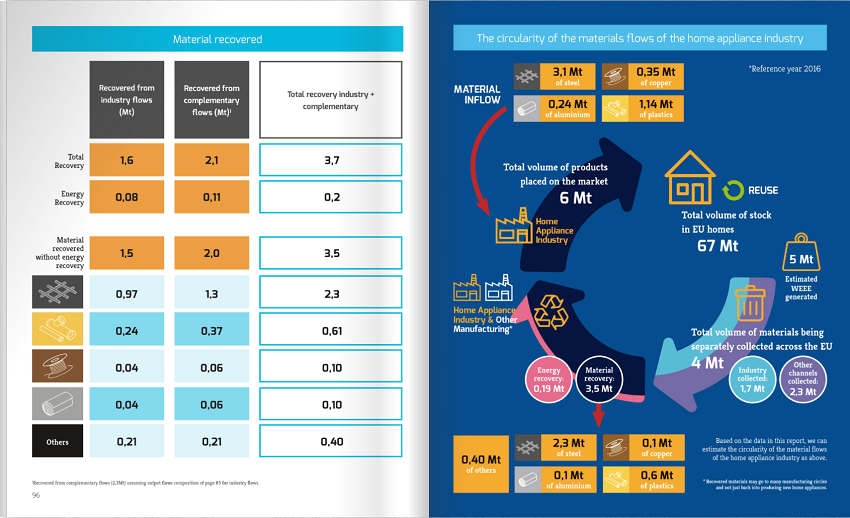
To better understand the importance for industry and society of circular economy, a first study analysing the material flows of the home appliance industry, has been published on www.materialflows.eu. It is fundamental to know concretely what we are speck about, looking at real numbers. Annually, the home appliance industry provides EU citizens and households with 1 billion small and large home appliances, that require 6 million tonnes of raw materials to be produced, comprising of 3 million tonnes of steel and stainless steel, 1,1 million tonnes of plastics and more than half a million tonnes of copper, aluminium, glass and concrete. While these volumes are significant, they are only a fraction of global material consumption. The European home appliance market represents a share of global material consumption ranging from 0,2% for steel to 0,5 % for plastics and 1,2% for copper.
Nearly 8 billion installed products in homes contain more than 30 million tonnes of steel, 12 million tonnes of plastics, and a few million tonnes of non-ferrous metals and glass. These appliances represent a vital source of materials for the EU, embedded in our daily life. Home appliance material composition is the main driver for the treatment and recovery of products at the end of life. This means that when appliances do finally come to the end of their useful life, they are discarded, collected and treated and the materials are recovered for a second life.
The steel, copper, aluminium, plastics and the rest of the materials of the appliances, that have made it to the recycling facilities, come back to production processes in both our sector and other industries, helping to close material loops. Industry-led recycling, mainly via take- back schemes set up by industry, is now well established and today collects and treats about 1,7 million tonnes annually across the EU. But this volume is nowhere near the estimated annual total of 5 million tonnes of discarded appliances. Because of the high metal content and intrinsic economic value of large appliances, and the historic presence of the recycling industry, already long before EU WEEE legislation, market dynamics make sure that a large share of all electronic waste is handled by other actors outside the industry recycling schemes.
“We, the home appliance industry in Europe, believe that what goes around should come around and also know that every fruitful discussion should be based on facts – said CECED’s Director-General, Paolo Falcioni. The result of investing more than €1.4 billion in research and development and creating nearly 1 million jobs is clear. The home appliance industry is circular from the outset, tackling the challenges from the production of appliances to material recovery at their end of life.»



